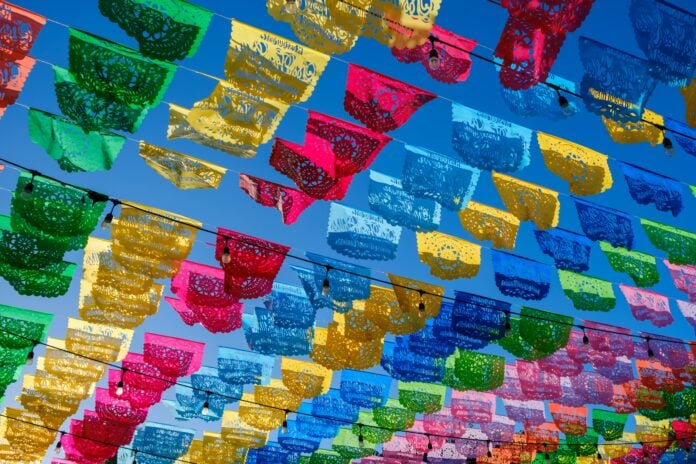Years ago, I took a cable car tour above Iztapalapa. Beneath me was a patchwork of roofs covered in colorful murals. I had taken a similar tour in Medellín, Colombia, yet the visual pattern of the Mexican rooftops was highly distinct. Sure, there were paintings of Mexica warriors and jaguar heads, but the detail that really stood out was the color.
Mexico is a landscape of rosy pinks, bold blues, golden yellows and burnt reds. Could you say the same for Peru? Guatemala? Turkey? Yes. Still, it’s undeniable that certain shades just look Mexican. That’s because they are, and here’s why.
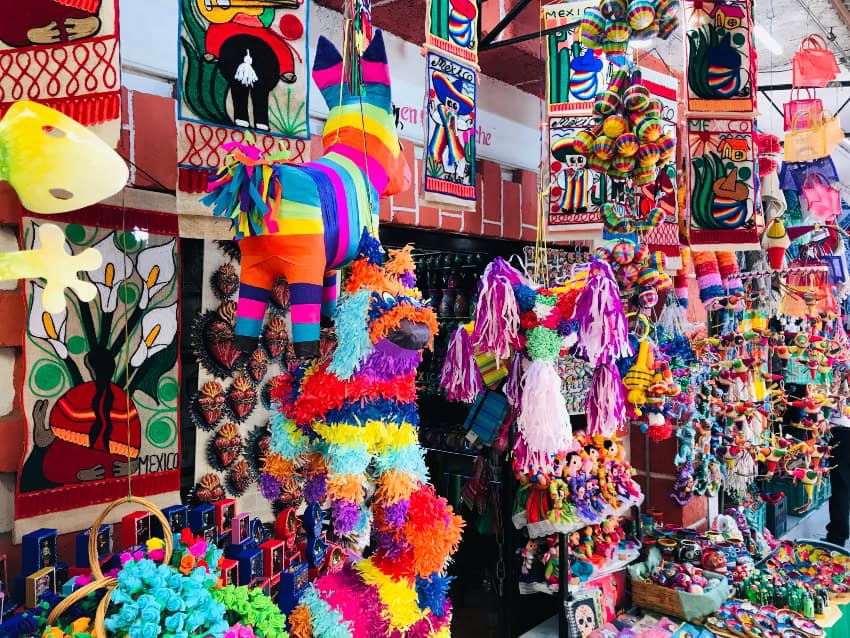
The ancestral language of color
Long before ancient civilizations adopted the written word, people communicated through color. The Mexica defined cardinal directions using different hues — red for east, green for south, black for north and white for west. Moving eastward, the Maya linked colors to the cosmos, and yellow symbolized creation while blue meant rain or, depending on context, sacrifice. The means to collect these colors were purely agricultural: insects, plants and earth minerals were used for the unique pigments they carried. These stains could be found on murals and codices, as well as pottery and statues offered to the gods.
With the Spanish arrival came even more pigments and techniques to extract them, not to mention religious iconography that soon showcased a blend of indigenous and European shades. These tints illustrate Mexico’s essence, and while many are now achieved through commercial development, their symbolic meanings continue to live on through art, food, home design and fashion.
Cochineal red
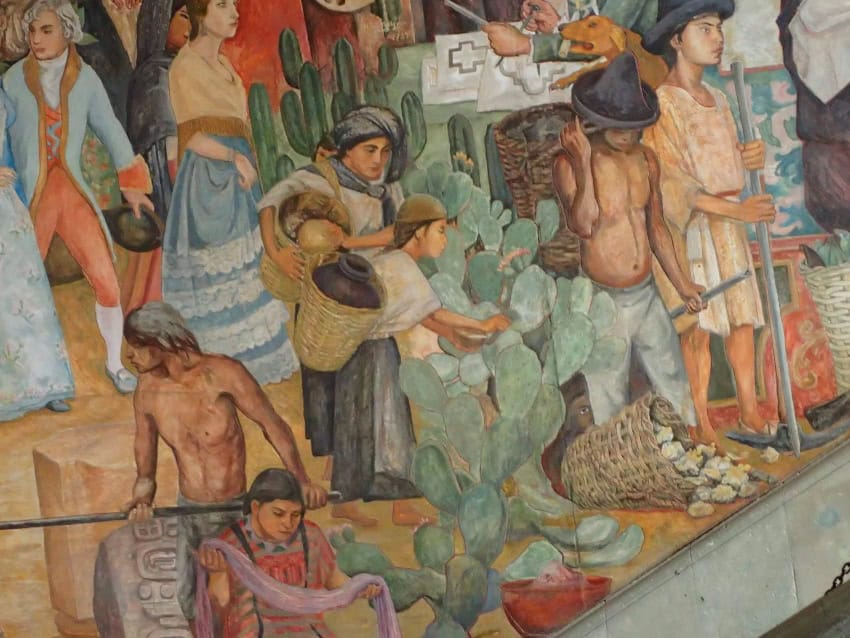
If you’ve been to Oaxaca City, you’ve seen firsthand the wealth generated by a single color. Mexico’s southern colonial gem was once home to the second-richest export – nocheztli, also known as cochineal red. The color comes from crushed cochineal, parasitic insects that live on the nopal cactus. In pre-Hispanic Mexico, red was a sacred hue, representing life, death and renewal, often found on temples and burial sites, in textiles and clothing. From this particular red came varying shades of pinks, crimsons and even burgundies. When Mexico joined the global trade market, cochineal red spread throughout Europe, even coloring the famous “redcoats” worn by the British Army. Oaxaca Valley farmers began breeding the insects to support trade, generating millions in capital.
The process wasn’t quick — more than 70,000 female bugs and eggs are required to make one kilo of pigment — but the finished product was more brilliant than any red Europeans had ever seen. At its height, the pigment was more valuable than gold. The money that poured in funded the city’s expansion from military outpost to commercial hub, resulting in the construction of impressive stone mansions and gold-leafed cathedrals.
Maya blue

Maya Blue is believed to have been first developed by the Maya around the 8th century CE. It is one of the earliest known examples of advanced organic-inorganic chemistry — a blend of natural indigo dye and clay, sourced from the Yucatán Peninsula. You’ve certainly seen the bold turquoise color on Mesoamerican murals, pottery and sculptures from Calakmul to Chichén Itzá. Generally, the color is associated with water, rebirth and the rain god, Chaac.
The most traditional craftspeople make Maya blue the same way today as thousands of years ago — leaves and stems from the añil plant are submerged in a vat of water for 12–24 hours to ferment. The liquid is then transferred to another vat and agitated for several hours. This speeds up the oxidation process, creating blue flecks that sink to the bottom. Sometimes, lime (stone) is added. The “mud” that forms at the bottom is drained and dried in the sun, resulting in what the Maya once called “blue gold”. The color can withstand remarkable natural threats, from humidity to acid, retaining its lustrous hue for centuries.
Mexican pink
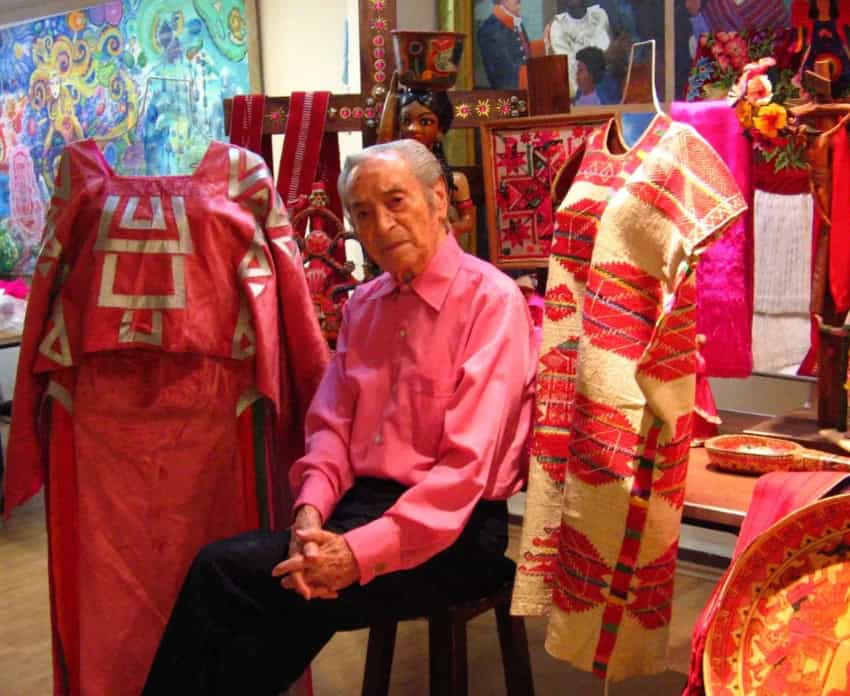
Rosa mexicano is not a natural pigment, but as the shade is so definitive of Mexico, it would be impossible not to mention it. In 1949, Veracruzano fashion designer Ramón Valdiosera received government funding to present a clothing collection at New York’s Waldorf Astoria Hotel during “Mexico Week.” The garments he showcased were inspired by traditional huipiles, rebozos and pre-Hispanic design, but what stood out most was the striking pink color he had used. The shade, visually derived from Mexico’s landscapes and bougainvillea flowers, was quickly dubbed Mexican pink, and from that moment served as a symbol of Mexican pride.
The color is everywhere — the famous Luis Barragán Casa Giraldi in Mexico City’s San Miguel Chapultepec neighborhood is a prime example of rosa mexicano in action — and has been for hundreds of years, often achieved by mixing the aforementioned cochineal red with other dyes. In 2015, Mexico City rebranded its taxis to reflect the color, now associated with the country’s charisma and vibrance.
Mexican green

Green was revered by the Mexica and earlier cultures as the color of life, fertility and hope. The feathers of the quetzal bird — vivid and green — were reserved for nobility and deity imagery, especially for the god Quetzalcoatl. Jade was another shade of sacred green, represented in its most notable form as a funerary mask for Pakal the Great of Palenque, the ancient Maya city in Chiapas. To these early inhabitants of what we now call Mexico, green symbolized eternal life and power.
Traditionally, pigments were derived from diverse plant and mineral sources. The muicle plant’s leaves were boiled for hours until a deep emerald liquid emerged. The barba de león (dodder plant) provided a different shade when combined with various lichens (symbiotic relationships between a fungus and algae), which resulted in the vibrant green details found on Chiapas huipiles. The earth itself also provided various pigments, and green clay deposits found near volcanic regions were ground into fine powders and mixed with plant-based binders for murals and architecture.
Mexican yellow
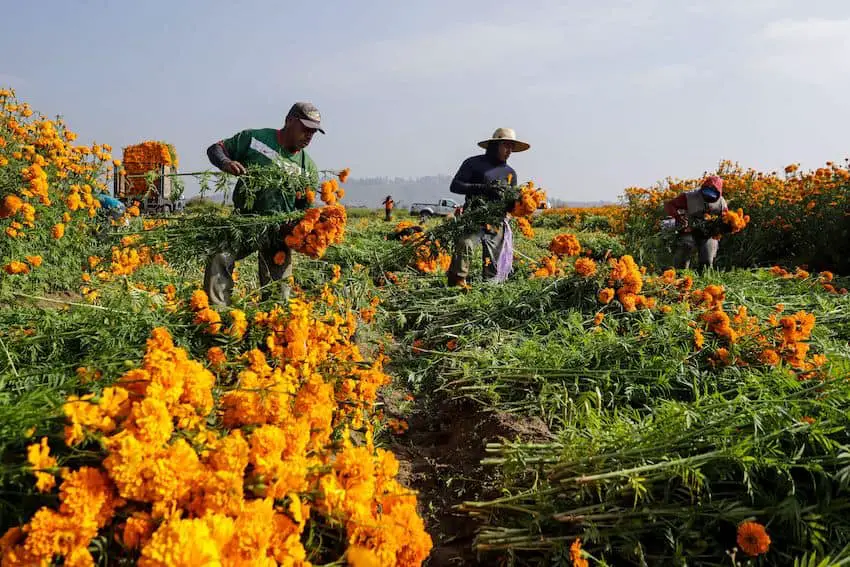
Mexican yellow carries profound spiritual significance as the color from which humanity was born. In Maya mythology, the gods formed the first people from golden maize dough, making yellow the fundamental color of creation and marking every aspect of Mexican culture, including daily meals and religious ceremonies.
The extraction of yellow pigments was an art form — artisans knew to gather cempasúchil (marigold) petals at dawn because their color was most intense. They would grind the petals with volcanic stone mortars and mix the paste with mineral salts, creating a lasting golden dye. Sunflower petals were also used, but resulted in a different shade. Clay ochres were also used, carefully selected for their iron content and ground into powders that could withstand centuries of exposure.
Día de Muertos is perhaps the most iconic example of Mexican yellow, with marigold petals used as colorful pathways for souls returning from the afterlife. The color also shows up in Izamal, Yucatán’s famous yellow pueblo. Whether painted in the brilliant shade as a nod to the ancient Maya sun god Kinich Kakmó or for the 1993 arrival of Pope John Paul II, it remains a symbol of Mexico’s connection to the spiritual realm.
Mexican purple: the royal dye of the coast
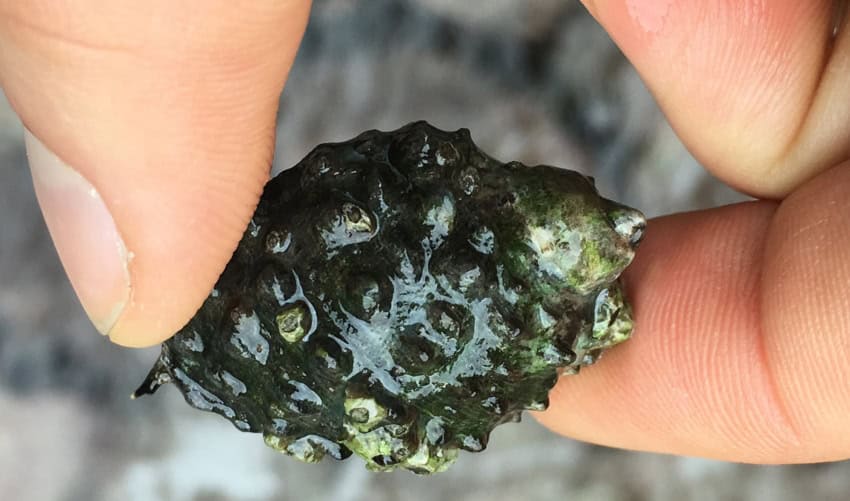
Purpura prehispánica is one of the rarest and most labor-intensive colors in world history. Indigenous Mixtec and other coastal peoples of Oaxaca started producing the legendary deep purple dye centuries ago. The hue is derived from ink secreted by the marine snail púrpura pansa. Because of the difficult extraction, the precious color was reserved exclusively for priests, rulers and sacred textiles.
The process starts with gentle stimulation to release a milky secretion that’s then applied to cotton yarn. Once the liquid is exposed to sunlight, it transforms from yellow to green to a permanent purple. It takes hundreds of snails and many hours to dye even a single skein of thread, making each purple garment extraordinarily valuable.
Too precious to fade
This rarity nearly led to the tradition’s near-extinction — foreign corporations began overharvesting in the 1980s when international interest in natural fabric dyes surged. Japan’s Imperial Purple Inc. hired non-Mixtec fishermen to collect snails year-round, disregarding sustainable practices long in place to protect the creatures from harm. By 1988, the Mexican government declared the purpura snail federally protected. Imperial Purple Inc. was expelled, and harvest rights were restricted only to licensed Mixtec dyers following traditional conservation cycles.
What makes Mexican colors so distinctive isn’t just their vibrancy, but the stories they carry. These pigments have survived conquest, transformation, and globalization, their symbolic power transcending the methods used to create them. In a world increasingly dominated by synthetic dyes and mass production, Mexico’s ancestral palette reminds us that some traditions are simply too precious to fade.
Bethany Platanella is a travel planner and lifestyle writer based in Mexico City. She lives for the dopamine hit that comes directly after booking a plane ticket, exploring local markets, practicing yoga and munching on fresh tortillas. Sign up to receive her Sunday Love Letters to your inbox, peruse her blog or follow her on Instagram.
